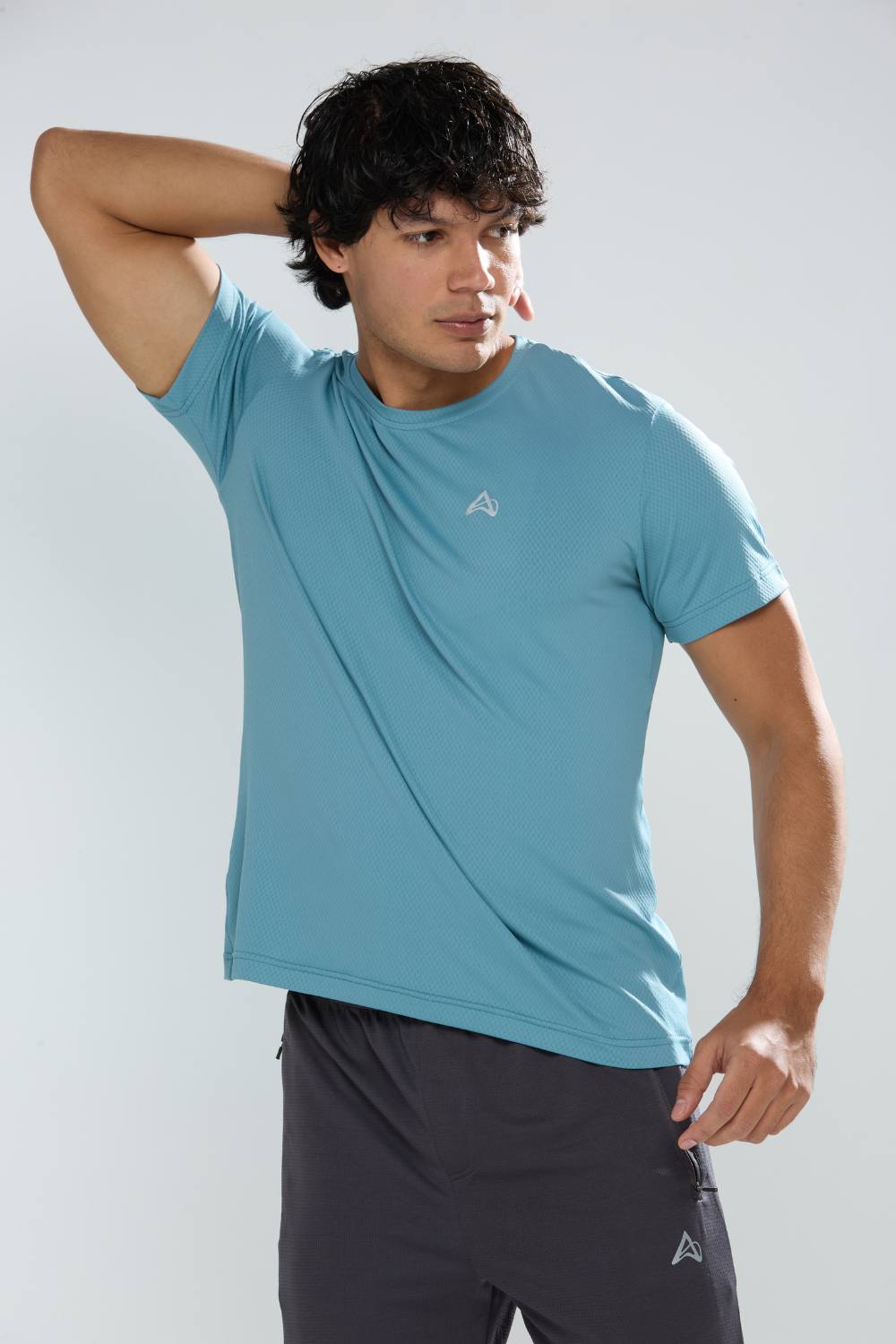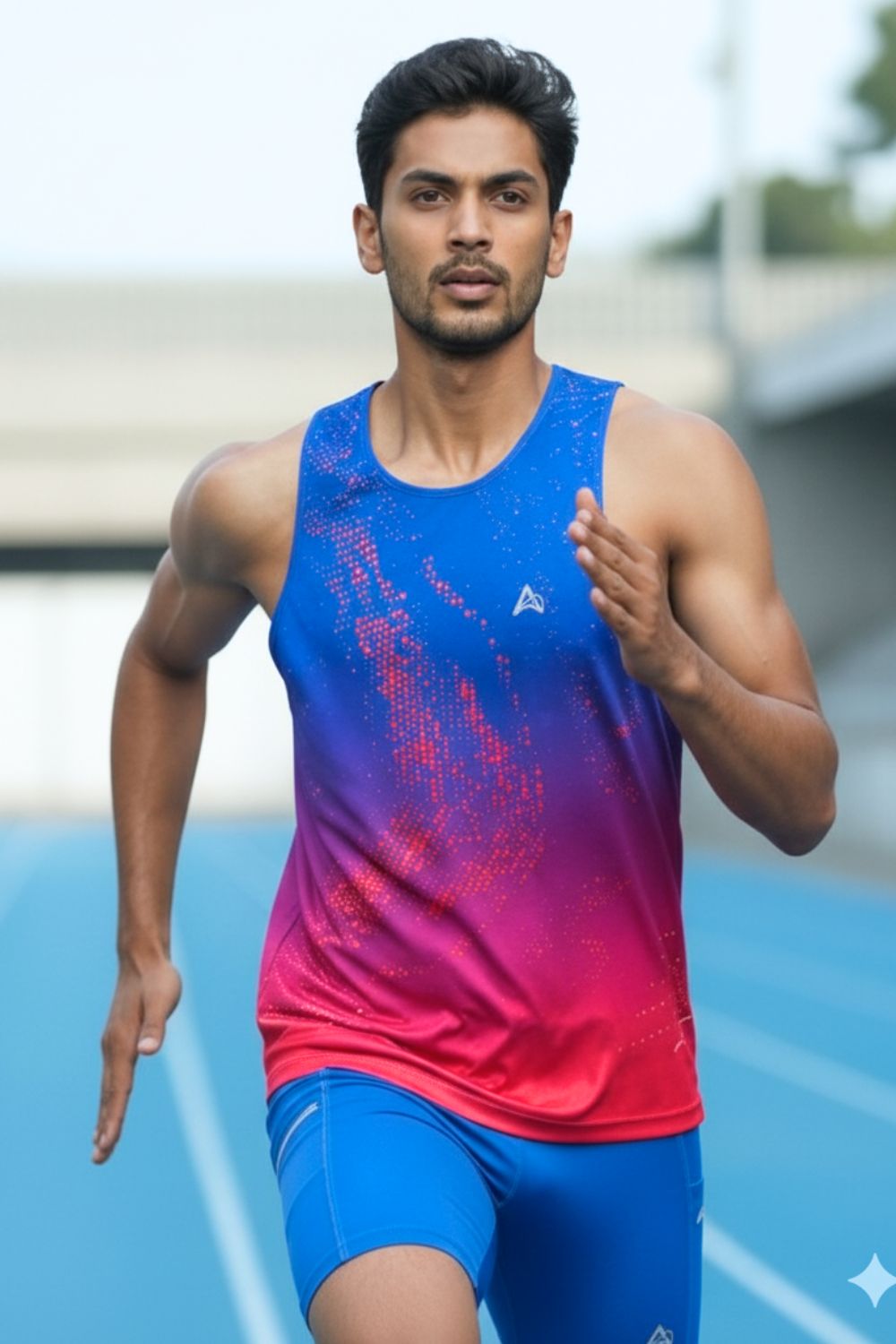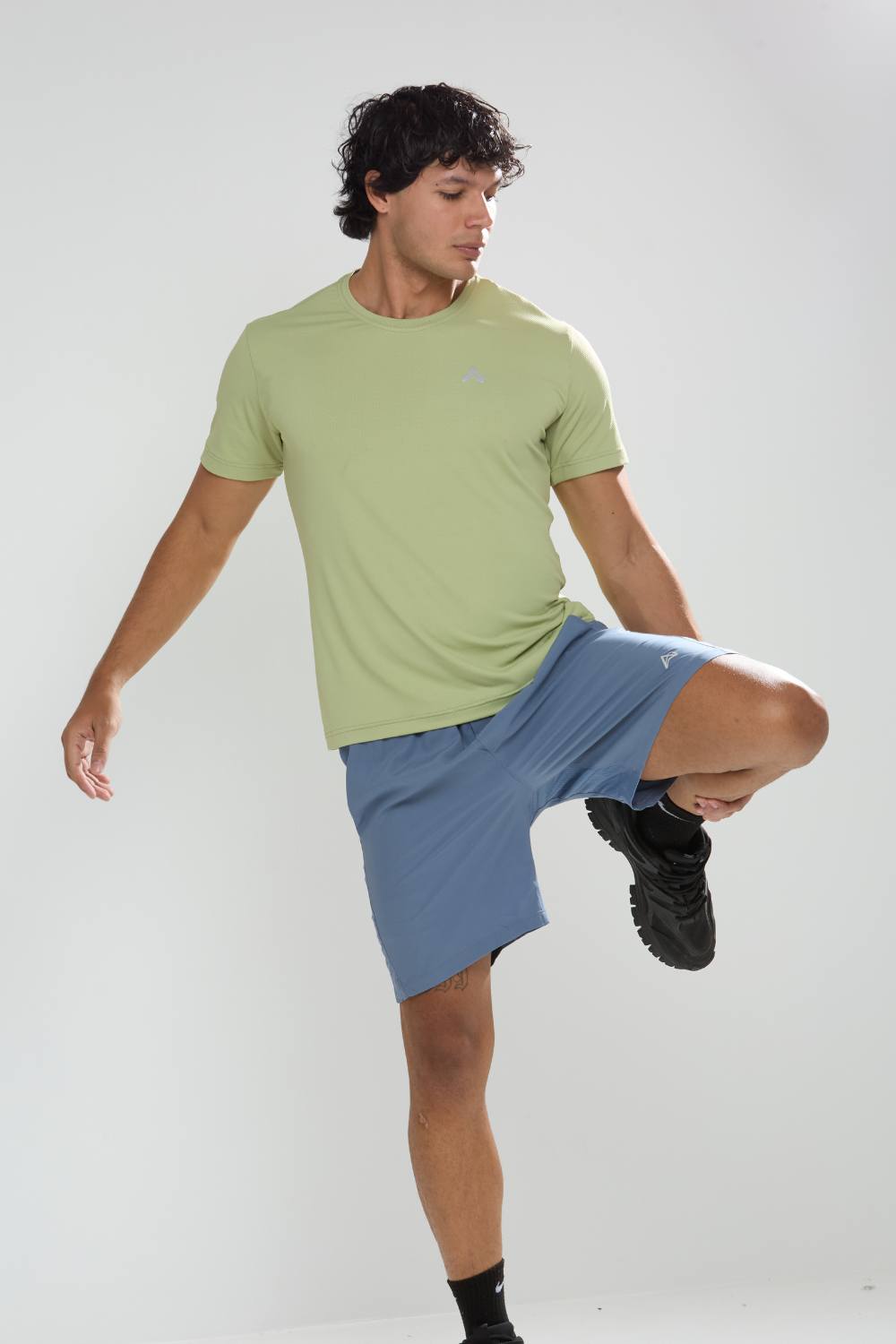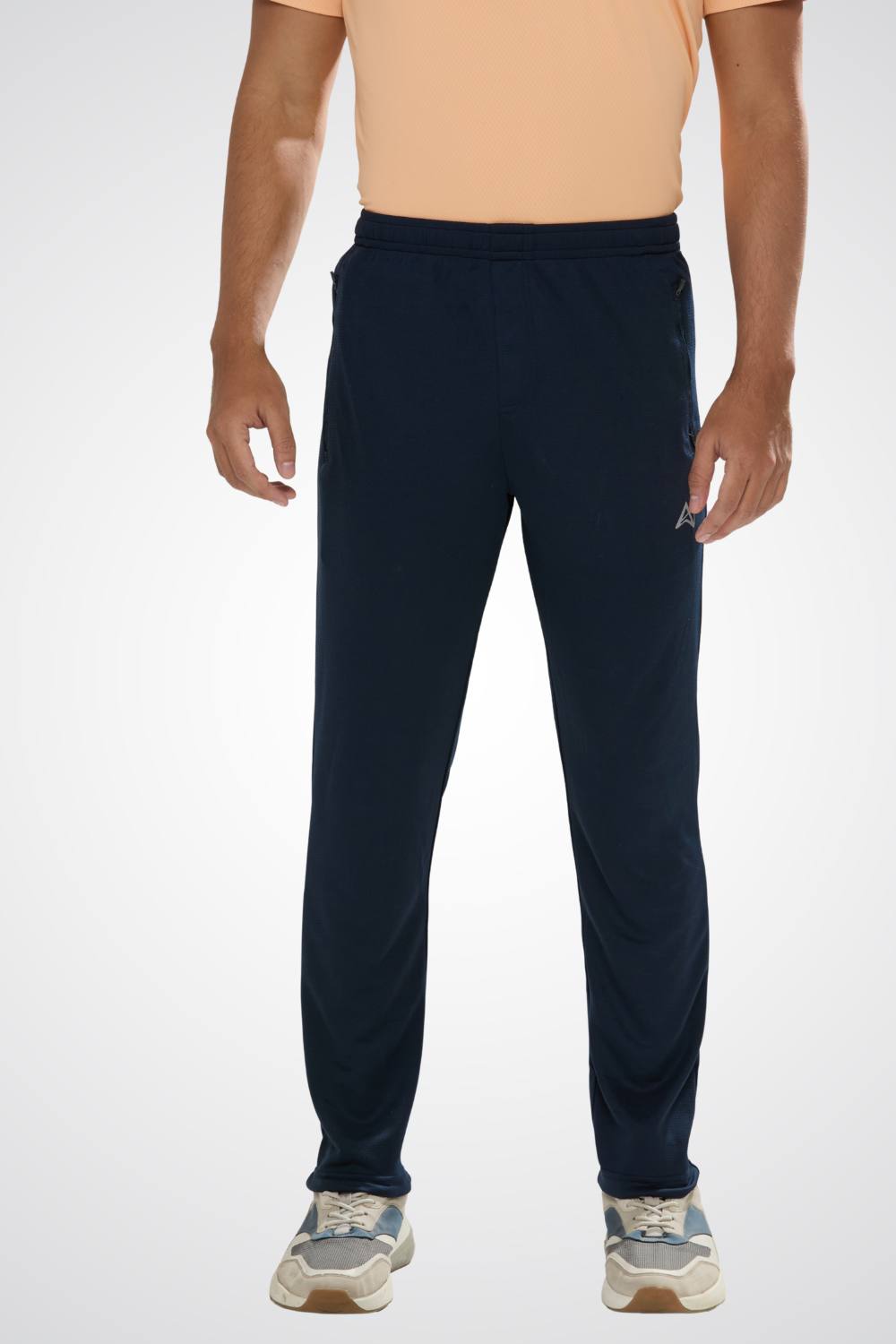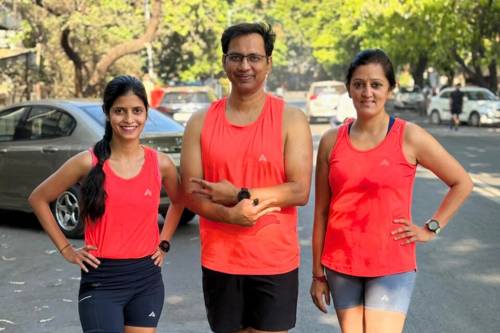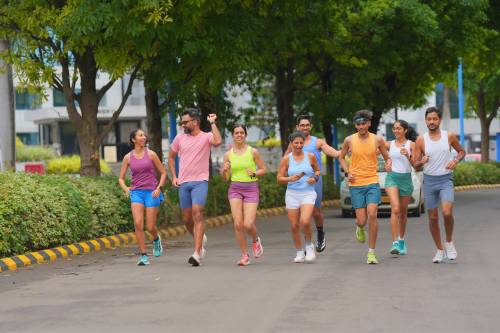Quick Listen:
Imagine the pre-dawn streets of Chennai, where the air hangs heavy like a saturated sponge, clinging to every breath. Runners emerge from their homes, tying shoelaces under dim streetlights, fully aware that the coming hours will demand more than mere mileage they'll require a fierce battle against India's unforgiving tropical climate. For marathon enthusiasts nationwide, preparation transcends simple endurance; it involves confronting heat and humidity that drain energy, impair concentration, and occasionally escalate to life-threatening levels. Amid a burgeoning running movement sweeping from bustling metropolises like Mumbai to quieter tier-2 locales, India's distinctive weather patterns are compelling both athletes and sportswear innovators to overhaul their approaches to long-distance training.
Tired of gear that slows you down? Chafing, soggy fabrics, and missing pockets kill your run's momentum. At Aguante, we're runners who get it. Our high-performance activewear features moisture-wicking fabrics, ergonomic designs, and smart storage to keep you focused. Shop Now!
Training in Heat and Humidity: The Hidden Challenges Facing Indian Marathoners
India's endurance running landscape is experiencing unprecedented growth. Signature events such as the Mumbai Marathon and the TCS World 10K in Bangalore attract hordes of participants annually, ranging from seasoned professionals to novices pursuing personal milestones. However, unlike their counterparts in milder regions, Indian runners contend with an unrelenting foe: the local climate. A January 2025 study highlights the escalating dangers, revealing a surge in heatwaves across the nation. It distinguishes between extreme heatwaves characterized by soaring temperatures and low humidity and oppressive ones, which combine intense heat with elevated humidity. The research indicates that both varieties are proliferating, but oppressive heatwaves are advancing at a quicker pace. Critically, these humid extremes correlate more robustly with fatalities from heat stress compared to their drier counterparts, underscoring a heightened threat to public health amid ongoing climate shifts.
For marathon trainers, this translates to amplified hazards in routine sessions, including severe dehydration and potential heatstroke, particularly in humid hotspots like Hyderabad and Kolkata, where moisture levels frequently exceed 80%. The study, authored by Naveen Sudharsan and colleagues, employs climate simulations to forecast dramatic rises in oppressive heatwave occurrences. Under a 1.5°C global warming threshold, such events could multiply fivefold by century's end (2070-2100) relative to the baseline period of 1975-2005. At 2°C warming, the multiplier jumps to eightfold, nearly doubling the risk from the lower scenario. Meanwhile, extreme heatwaves show minimal change. The authors emphasize that capping warming at 1.5°C might slash oppressive heatwave probabilities by 44% and extreme ones by 25% versus a 2°C trajectory, urging immediate adaptive measures in populous areas to curb escalating health perils from intensifying heat events.
The bodily burden is profound and multifaceted. Elevated humidity impedes evaporation of sweat, the body's primary cooling mechanism, resulting in skyrocketing internal temperatures, cramping muscles, and protracted recovery periods. A runner's VO₂ max, the benchmark for aerobic capacity, plummets under these conditions, complicating efforts to sustain speed or enhance stamina. Despite these obstacles, enthusiasm for running persists, bolstered by ascending disposable incomes and a societal pivot toward health-conscious lifestyles. As per a GreyViews analysis, the worldwide sports training sector stood at USD 10.23 billion in 2021 and is anticipated to climb to USD 15.43 billion by 2029, propelled by a 5.5% CAGR over the 2022-2029 span. This uptick stems largely from enhanced per capita earnings globally and amplified sports involvement for wellness perks, such as weight management, cardiovascular improvement, blood pressure reduction, diabetes prevention, and stress alleviation trends accentuated by the COVID-19 era's focus on personal health.
Sports training itself represents a methodical regimen crafted to propel athletes toward peak execution in their discipline. It fosters progressive gains in stamina, power, proficiency, drive, and self-assurance, while imparting deeper insights into the sport and the value of holistic well-being. In India, where marathon participation exemplifies this market's vigor, runners are increasingly seeking tailored programs that address the nation's climatic rigors.
A Market Accelerating to Adapt
The marathon boom has ignited a corresponding surge in India's athletic gear and apparel industry. Insights from Grand View Research value the domestic sports equipment market at USD 19.6 billion in 2021, with expectations of doubling to USD 38.7 billion by 2030 at a 7.9% CAGR from 2022 onward. Ball games dominated revenue in 2021, but fitness and strength equipment emerges as the swiftest-expanding category, reflecting a rush toward specialized running tools. Prominent global entities like Adidas AG, Nike Inc, Puma SE, and Under Armour Inc, among others, are vying to supply innovations suited to India's demands. Beyond basic footwear, athletes crave garments that efficiently draw away moisture, modulate body heat, and shield against harsh sunlight.
In sweltering urban centers like Chennai, where training often commences at 4 a.m. to dodge midday scorchers, the shortcomings of conventional attire become starkly evident. Ordinary cotton shirts rapidly become sodden burdens, and inadequately aerated footwear invites blisters or infections. International giants such as Nike, Puma, and Adidas, complemented by local innovators, are launching region-specific collections featuring sweat-evaporating materials, ultraviolet barriers, and airflow-optimized constructions ideal for humid tropics. Forward-thinking firms are also delving into sustainable alternatives, incorporating bamboo or organic cotton mixtures to merge efficacy with ecological responsibility, appealing to environmentally aware consumers.
Innovation extends well past fabrics. Hydration protocols are advancing, with athletes turning to electrolyte-enriched beverages and cooling aids like chilled neck gaiters or arm sleeves. Smart devices are proliferating, offering real-time tracking of vital signs to inform decisions on exertion levels. A Allied Market Research overview appraises the sports training market at $27.8 billion in 2023, forecasting an ascent to $50.7 billion by 2035 via a 5.2% CAGR starting 2024. This encompasses structured athlete preparation encompassing bodily fortification, technique honing, strategic acumen, harm aversion, and psychological fortitude. Customized regimes integrate cardio workouts, resistance sessions, nimbleness exercises, and skill polishing, all underpinned by empirical methodologies including periodization strategic phasing of training intensity to peak for pivotal contests. Instructors and mentors are pivotal in crafting these plans, increasingly incorporating India's climatic factors as essential considerations.
Navigating the Endurance Obstacles
Indian marathoners approach training with equal parts tactics and tenacity. Consider the running collectives in Kolkata, where members deliberately schedule sessions during peak mugginess to forge both physical toughness and mental fortitude. Top-tier competitors gearing up for overseas events in cooler settings encounter an ironic twist: their domestic practice environments prove far more grueling than the competitions themselves. A runner from Hyderabad shared a tactic of pre-soaking apparel to replicate the clammy sensation of a lengthy humid outing, cultivating acclimation to unease.
These hurdles transcend mere biology. Numerous Indian metropolises suffer from scarce shaded pathways or secure venues for off-hour runs. Urban smog exacerbates thermal strain, transforming each inhalation into a challenge. In rural or smaller urban areas, procuring premium yet budget-friendly sportswear poses a barrier, compelling many to settle for inferior alternatives. Together, these ecological, structural, and access issues compound the inherent stresses of heat and humidity, forging a distinctly Indian ordeal for long-distance aspirants.
Adaptation emerges as a critical theme. Coaches advocate for early or nocturnal runs to evade peak temperatures, coupled with vigilant hydration and electrolyte balance. Acclimatization protocols, such as gradual exposure to humid conditions, help mitigate risks. Apparel advancements play a starring role, with breathable synthetics and compressive elements aiding circulation and cooling. Yet, the broader implications of climate projections demand systemic responses, including urban greening for shaded routes and public awareness campaigns on heat safety.
A Memorable Sprinting Toward Climate-Resilient Innovation
As India's running fervor propels ahead, it unlocks vast prospects for the activewear realm to pioneer solutions. Authorities in sports physiology and coaching concur that tailored, locale-specific advancements hold the key. Envision textiles that actively chill the epidermis or gadgets that preemptively signal overheating dangers these are attainable horizons. Alliances among garment producers and academic bodies might spawn revolutions, such as humidity-adaptive materials or footwear emphasizing airflow while upholding stability. The ominous forecasts from the heatwave research cast a long shadow, yet they illuminate pathways for brands to champion designs attuned to environmental shifts.
Ultimately, India's marathon community embodies unyielding determination. These individuals aren't merely pursuing medals or times; they're challenging a climate that probes their boundaries relentlessly. With the sun ascending over hubs like Chennai, Kolkata, or Mumbai, they gear up, persevere through perspiration, and press on. Their perseverance serves as an impetus for industry leaders, researchers, and officials to architect a landscape where Indian runners not only endure the swelter but excel despite it, securing a healthier, more resilient athletic future.
Frequently Asked Questions
How does India's climate affect marathon training compared to other countries?
India's tropical climate creates unique challenges with high humidity (often exceeding 80%) that impairs the body's natural cooling through sweat evaporation. This leads to elevated internal temperatures, muscle cramping, and reduced VO₂ max capacity. Unlike runners in milder climates, Indian marathoners must battle both extreme heat and oppressive humidity, with recent studies showing these conditions are intensifying due to climate change and pose greater health risks than dry heat alone.
What gear and clothing innovations help Indian runners train in hot, humid conditions?
Modern athletic wear for Indian conditions focuses on moisture-wicking synthetic fabrics, UV protection, and enhanced airflow design optimized for humid tropics. Major brands like Nike, Adidas, and Puma are developing region-specific collections featuring sweat-evaporating materials and improved ventilation. Additional innovations include electrolyte-enriched hydration solutions, cooling accessories like chilled neck gaiters, and smart devices for real-time vital sign monitoring to prevent overheating.
When is the best time to train for marathons in Indian cities to avoid heat stress?
Indian marathoners typically train during pre-dawn hours (starting around 4 a.m.) or late evening sessions to avoid peak daytime temperatures. Cities like Chennai, Kolkata, and Mumbai see runners emerging under dim streetlights to complete their training before the oppressive midday heat sets in. Coaches also recommend gradual acclimatization protocols and vigilant hydration strategies, as urban smog can compound thermal strain during daylight hours.
Disclaimer: The above helpful resources content contains personal opinions and experiences. The information provided is for general knowledge and does not constitute professional advice.
You may also be interested in: Aguante Sportswear for Men and Women
Tired of gear that slows you down? Chafing, soggy fabrics, and missing pockets kill your run's momentum. At Aguante, we're runners who get it. Our high-performance activewear features moisture-wicking fabrics, ergonomic designs, and smart storage to keep you focused. Shop Now!
Powered by flareAI.co





